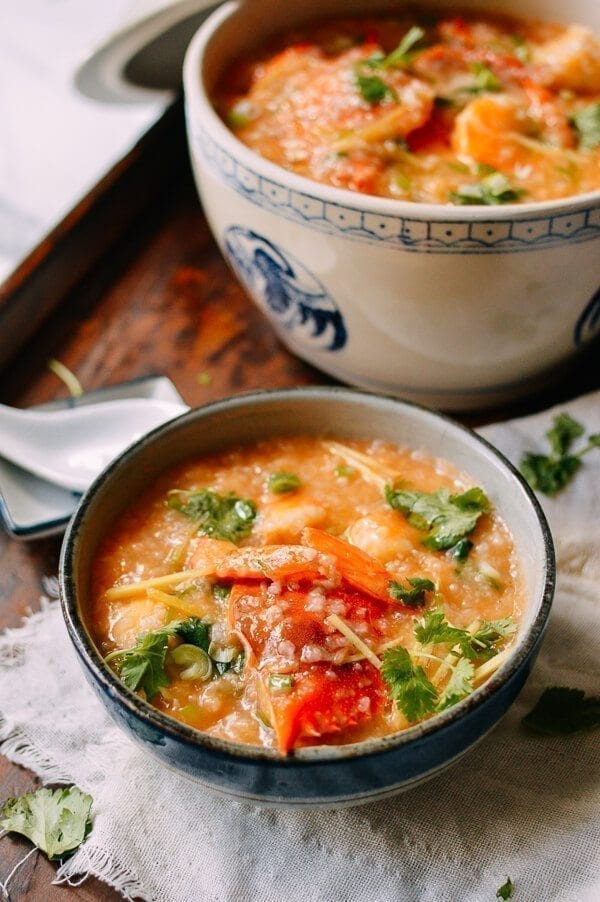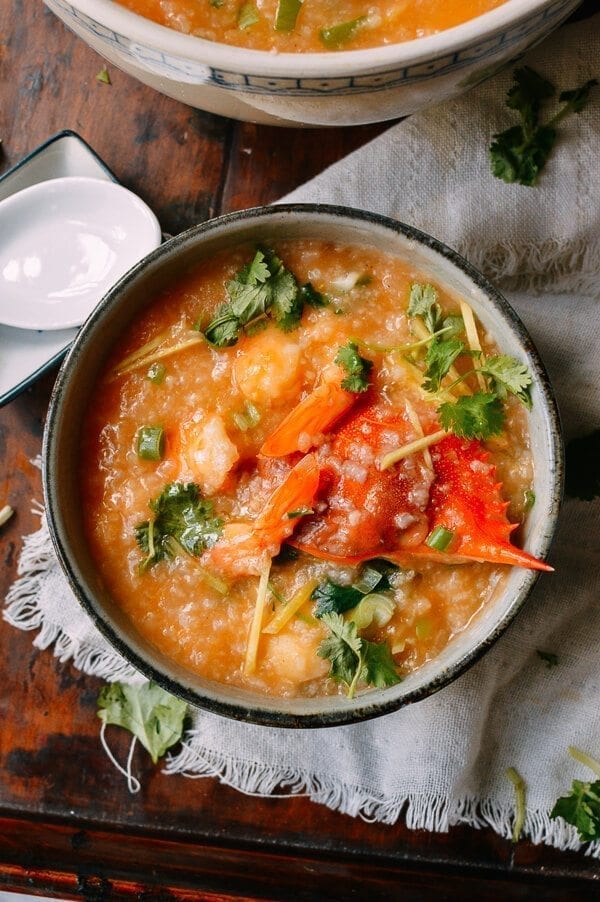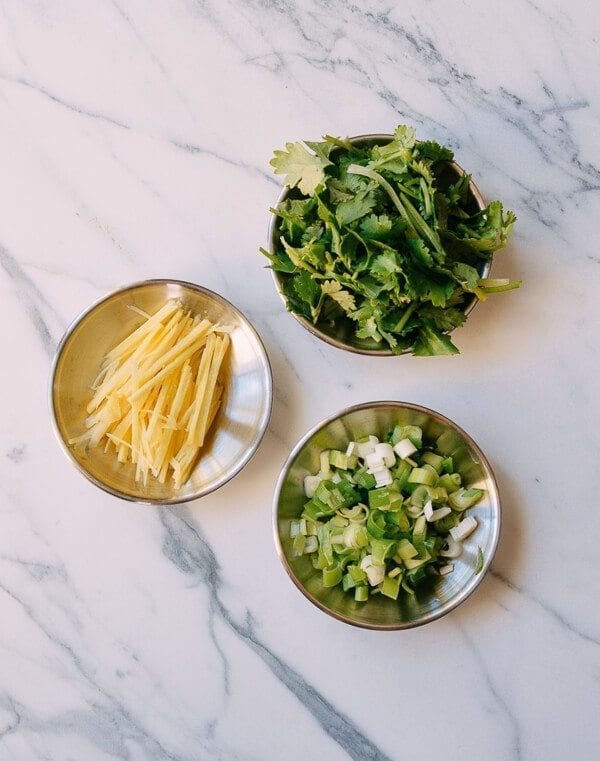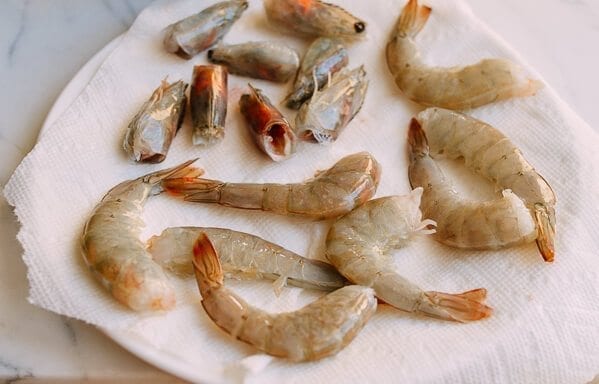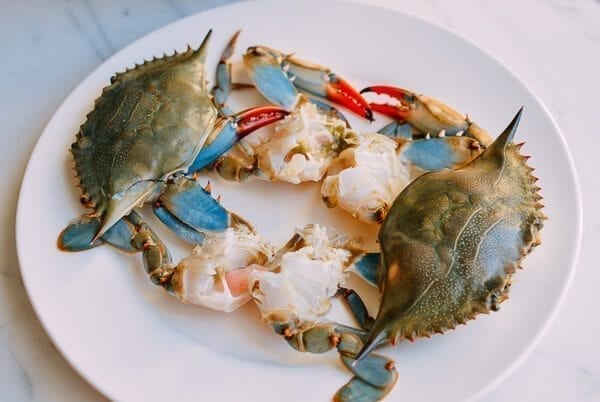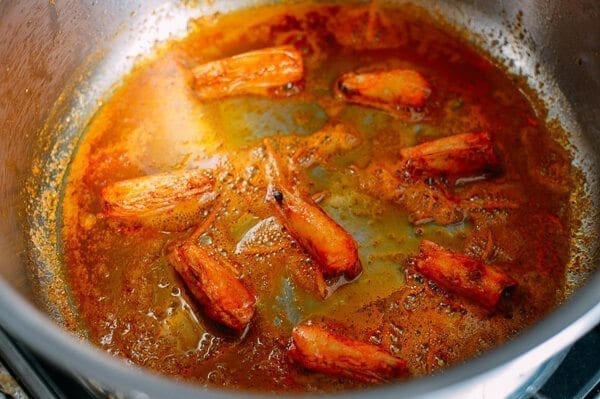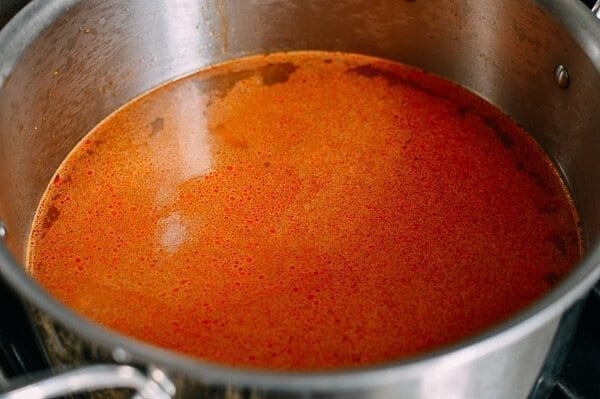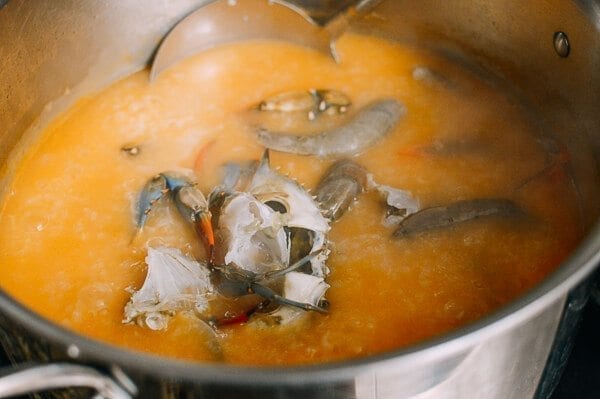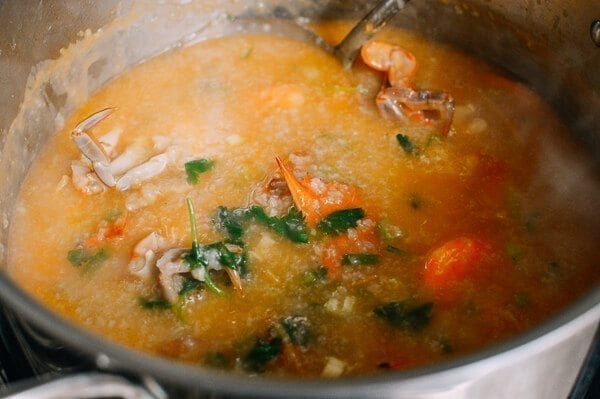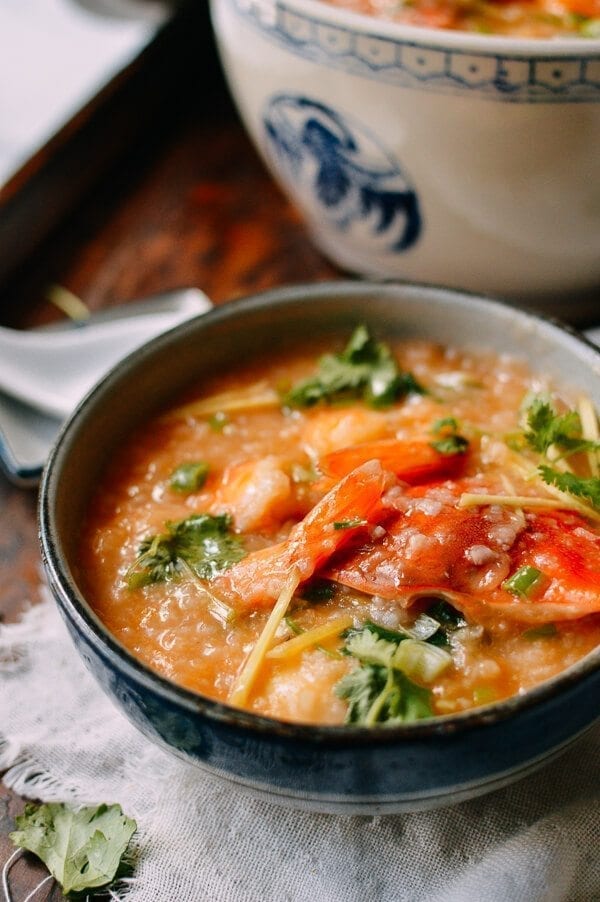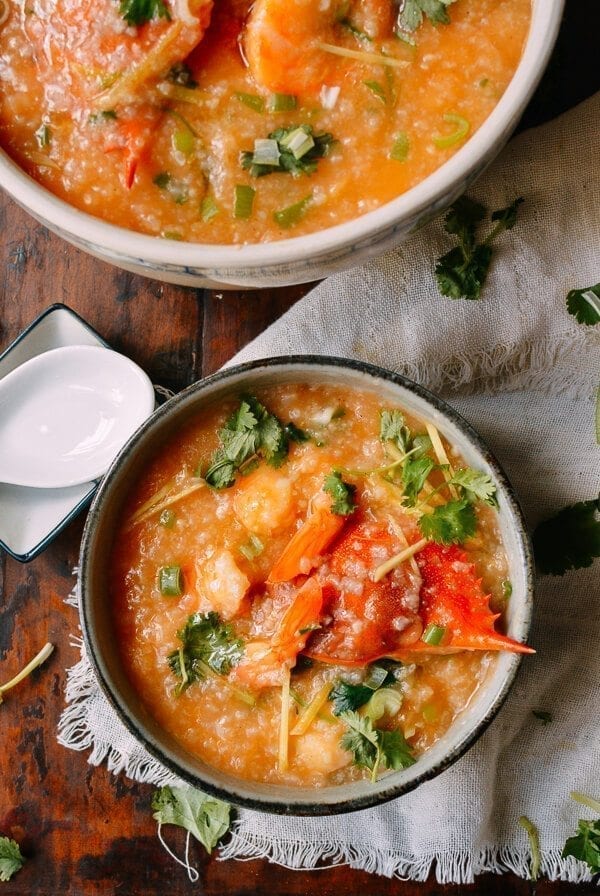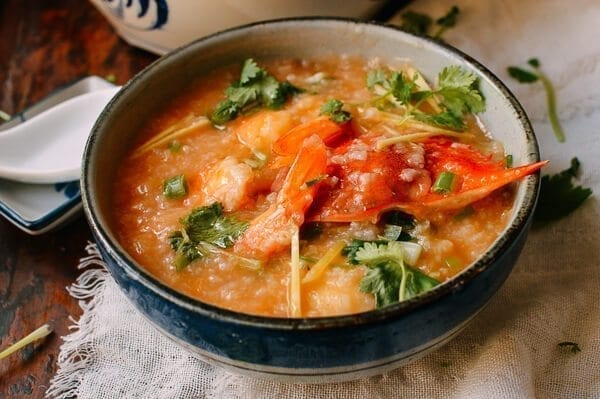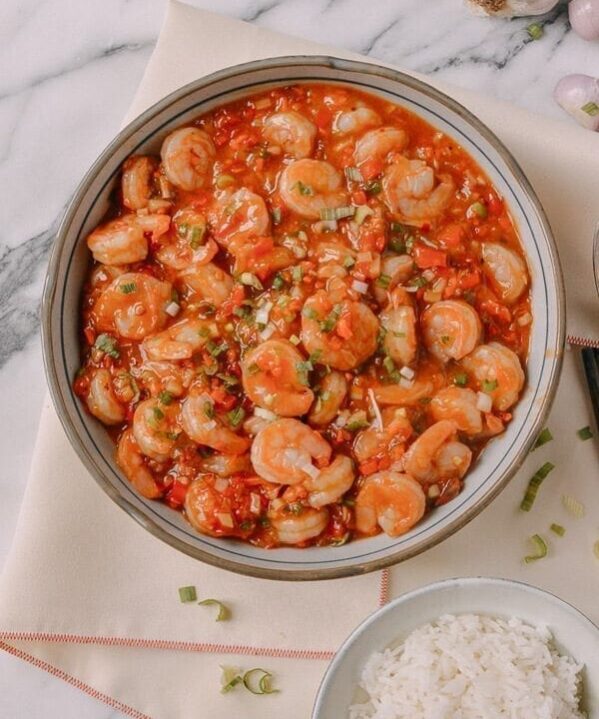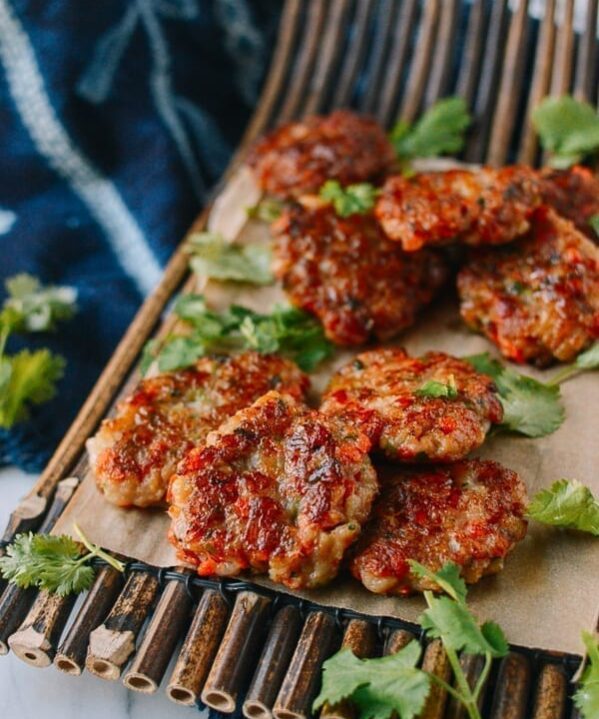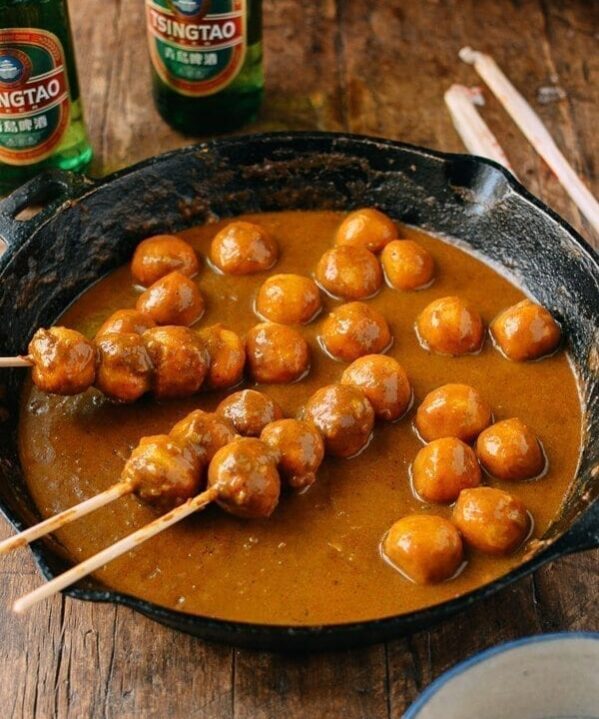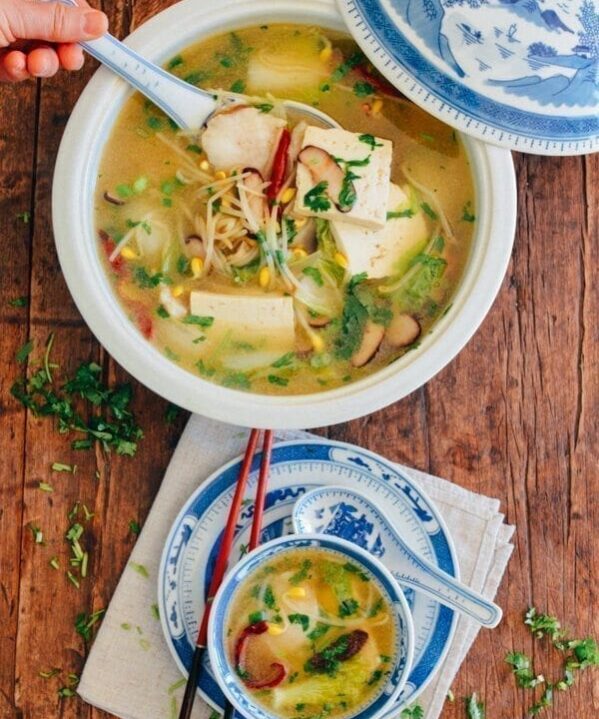Lately, I’ve been rethinking a common Chinese staple: porridge, aka “congee,” “粥 (zhou),” or “稀饭 (xi-fan).”
In China, Northerners like it plain (白粥), but Southerners like plenty of additional flavor. Some of our family’s favorites (mostly from Bill’s Cantonese side of the family) are Pork with Thousand Year Old Egg Congee (皮蛋廋肉粥), Fish Fillet Congee (鱼片粥), and Pork Bone Congee, to name a few. We even make congee with Thanksgiving leftovers!
For most of my life, congee has been considered a light meal and a simple breakfast choice. But in recent years, more and more Chaozhou (潮州) congee restaurants are popping up all over China, elevating this breakfast item to the dinner table (along with some eye-popping price tags!).
Elevating a Humble Breakfast Staple
The first time I noticed congee’s new status was during a trip to Shanghai in the summer of 2009. Despite the hot and humid summer heat, I could see people sipping beer, chatting leisurely, and sharing a large clay pot of congee. I couldn’t understand the desire for hot congee in the dead of summer.
But the image that’s stuck in my head (and the appeal it seems) was the clay pots of seafood congee with big chunks of bright red crab poking through the surface of the thick rice porridge, dotted with herbs and ginger. At over 100RMB a pot, I was pretty bewildered at congee’s new status and people’s willingness to spend the big bucks on a simple bowl of porridge.
So in the spirit of this new trend and to celebrate congee “making it,” as more than a cheap breakfast dish, I’ve decided to try my hand at making this Seafood Congee. The end result is an impressive dish that seafood lovers will swoon for.
What’s more, it can be achieved with just a handful of shrimp and the small indulgence of a couple of crabs. The key to stretching your seafood is using the head-on shrimp to make a rich shrimp stock that gives this congee its distinctive color and flavor. The addition of aromatics like scallions, cilantro, ginger, and white pepper round out the dish to make a super flavorful, satisfying meal.
My Foolproof Trick for Faster Congee
For this recipe, I’m using my foolproof trick for 20-minute congee. The technique of adding frozen, washed, uncooked rice to your congee, instead of standard dry rice, dramatically reduces cooking times and gets you the thick congee texture we all know and love.
If you’re like me, you already have a bag of rice ready and waiting in your freezer for when the congee craving strikes! If you don’t, it’s a quick step you can prep early in the day or the night before. You’ll save yourself the hefty price tag and have restaurant-quality congee in no time!
Let’s get started!
Seafood Congee Recipe Instructions
Rinse the shrimp under cold water, and remove the heads (don’t throw them away though). To clean the shrimp, cut open the back shell using kitchen shears to de-vein. Pat the shrimp dry with paper towels and set aside both the shrimp and the heads in the refrigerator.
For the crab, lift off the top shell of each crab and rinse clean using Bill’s detailed cleaning instructions in our recipe for Cantonese-style Scallion Ginger Crab for reference. Cut the cleaned crab into 4-6 pieces, and set aside in the refrigerator.
Now we’re ready to begin cooking! Heat the oil in a thick-bottomed soup pot over medium heat. Stir-fry the shrimp heads along with half of the julienned ginger for a couple of minutes, until they turn crispy and the oil turns a deep red color.
Then add in the water, and bring it to a boil. Turn down the heat to medium low, and simmer for 10 minutes. After 10 minutes, turn off the heat, and scoop out/discard the shrimp heads.
Next, add the frozen white rice and Shaoxing wine, bring to a boil again, and cook for 15 minutes over medium heat. The congee should be bubbling gently. Remember to stir from the bottom periodically to prevent the rice from sticking.
After 15 minutes, add in the cleaned shrimp and crab.
Stir, cover, and cook for another 10 minutes, until the shrimp and crab are cooked through.
Before serving, add salt to taste, white pepper, cilantro, scallions, and the rest of the ginger.
Serve your Seafood congee immediately and hot!
Seafood Congee (海鲜粥)
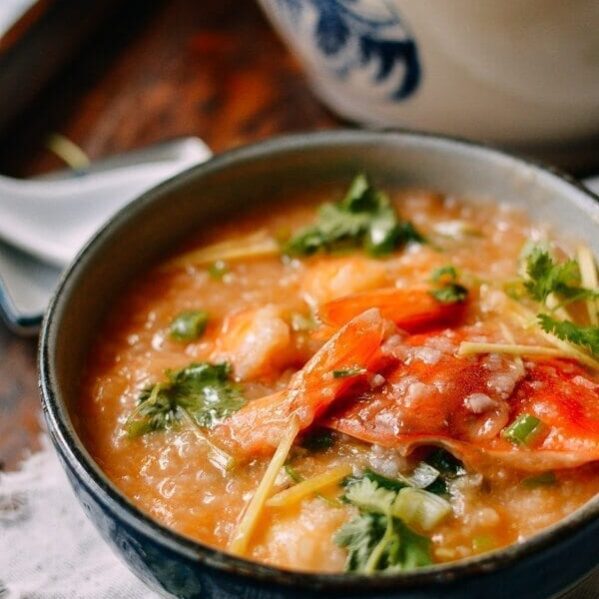
Ingredients
- 8 ounces whole shrimp (heads on, with shells)
- 2 crabs (about ½ pound total, we used Maryland Blue Crabs)
- 3 tablespoons oil
- 4 slices ginger (julienned)
- 10 cups water
- 1 cup frozen white rice
- 1 tablespoon Shaoxing wine
- Salt (to taste)
- ¼ teaspoon ground white pepper
- 0.5 cup cilantro (chopped)
- 0.5 cup scallions (chopped)
Instructions
- Rinse the shrimp under cold water, and remove the heads (don’t throw them away though). To clean the shrimp, cut open the back shell using kitchen shears to de-vein. Pat the shrimp dry with paper towels and set aside both the shrimp and the heads in the refrigerator.
- For the crab, lift off the top shell of each crab and rinse clean using Bill’s detailed cleaning instructions in our recipe for Cantonese-style Scallion Ginger Crab for reference. Cut the cleaned crab into 4-6 pieces, and set aside in the refrigerator.
- Now we’re ready to begin cooking! Heat the oil in a thick-bottomed soup pot over medium heat. Stir-fry the shrimp heads along with half of the julienned ginger for a couple of minutes, until they turn crispy and the oil turns a deep red color. Then add in the water, and bring it to a boil. Turn down the heat to medium low, and simmer for 10 minutes. After 10 minutes, turn off the heat, and scoop out/discard the shrimp heads.
- Next, add the frozen white rice and Shaoxing wine, bring to a boil again, and cook for 15 minutes over medium heat. The congee should be bubbling gently. Remember to stir from the bottom periodically to prevent the rice from sticking. After 15 minutes, add in the cleaned shrimp and crab. Stir, cover, and cook for another 10 minutes--until the shrimp and crab are cooked through.
- Before serving, add salt to taste, white pepper, cilantro, scallion, and the rest of the ginger. Serve immediately!
nutrition facts
